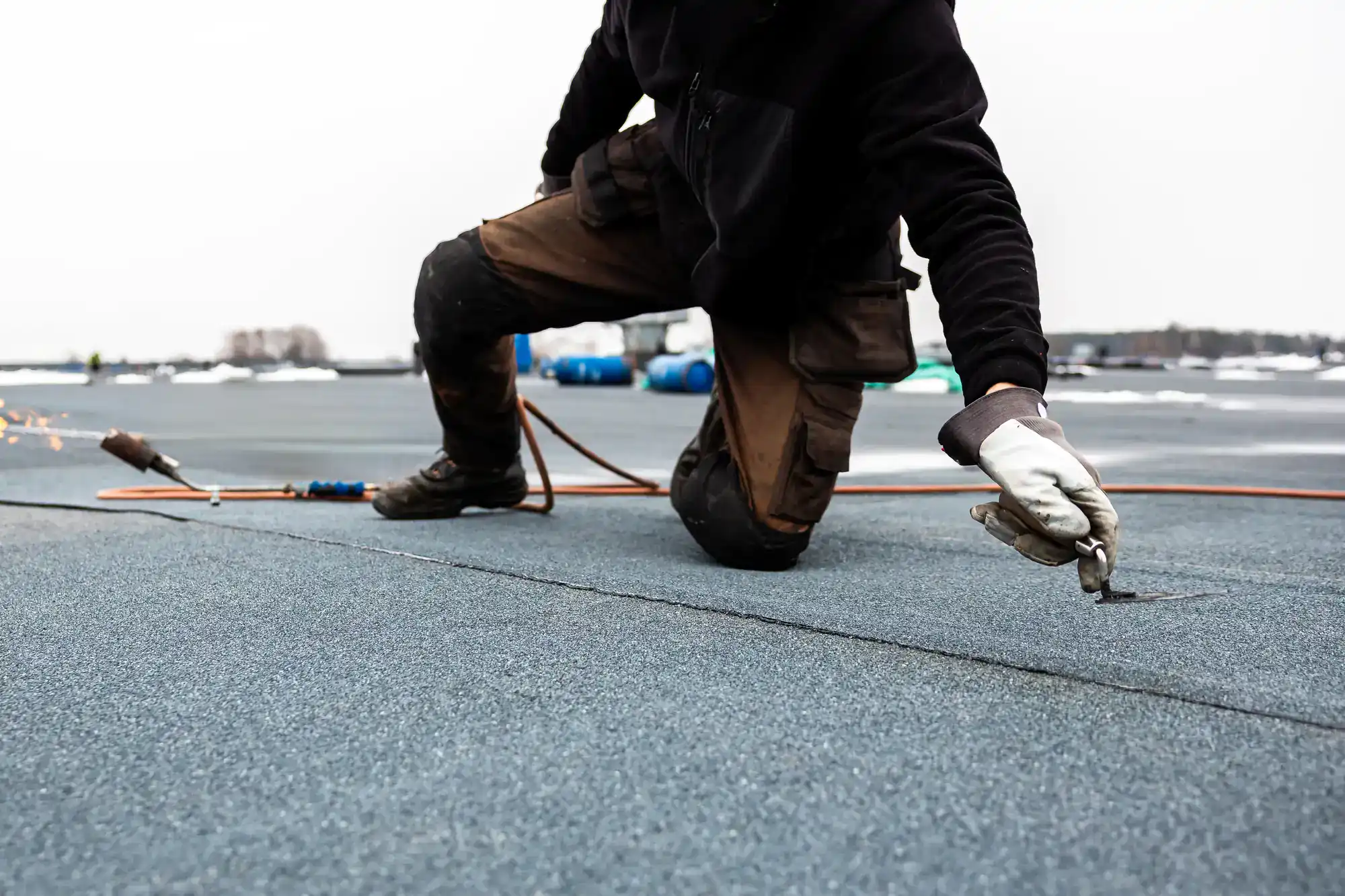
Hear from Our Customers
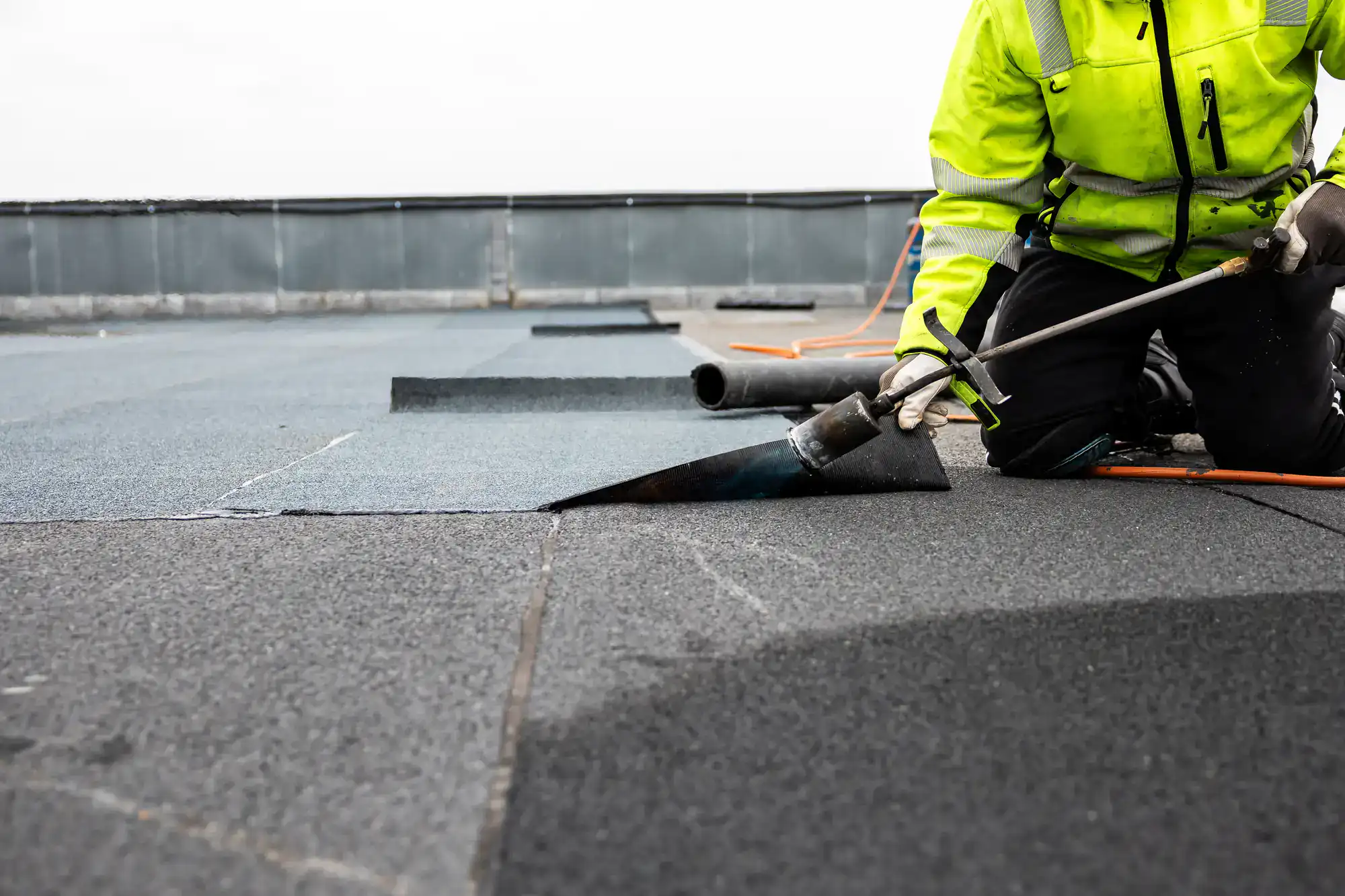
Your flat roof stops being a constant worry. No more emergency calls during storms or surprise leaks that disrupt your business operations.
A properly installed flat roof means predictable energy bills instead of sky-high cooling costs. When summer hits and temperatures soar, your building stays comfortable while your neighbors struggle with overheated spaces.
You get decades of protection, not years. Quality materials like TPO and EPDM handle everything from pooling water to UV damage, giving you the peace of mind that comes with a roof that actually works.
We understand what flat roofs face in Elmont. We’ve seen how Long Island’s hurricane season, heavy snowfall, and temperature swings test every roofing system.
Our team knows the difference between a roof that looks good on installation day and one that performs for decades. We use proven materials and proper installation techniques because we’ve learned what works in this climate.
When you work with us, you’re getting contractors who’ve handled everything from small residential flat roofs to large commercial installations across Nassau County.
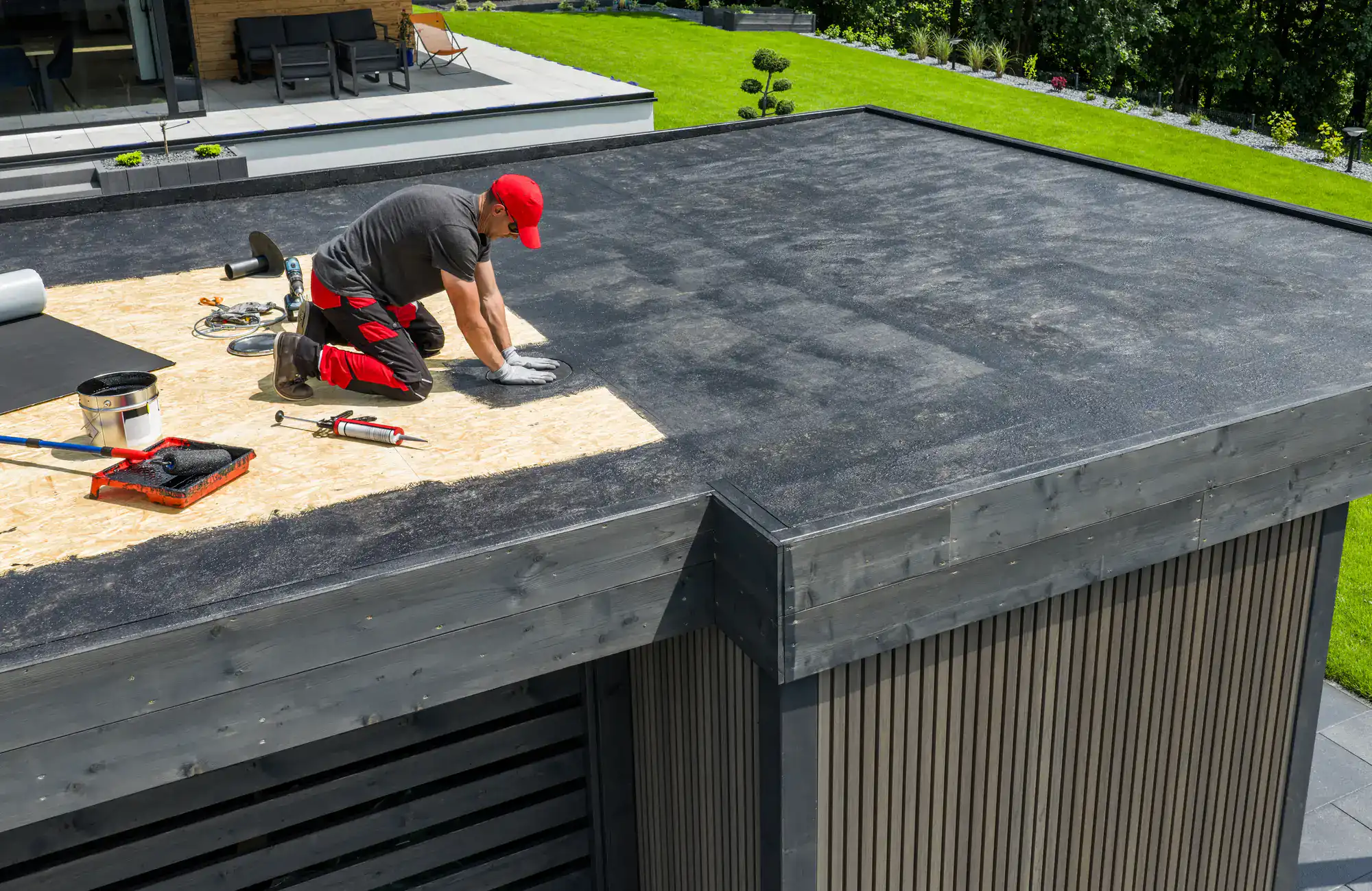
We start with a thorough inspection of your existing roof structure and drainage system. This isn’t a quick glance – we check for proper slope, identify potential problem areas, and assess what materials will work best for your specific situation.
Next comes material selection. Whether TPO for energy efficiency, EPDM for durability, or modified bitumen for high-traffic areas, we explain what each option means for your building and budget.
Installation follows manufacturer specifications and local building codes. We handle everything from tear-off to final inspection, ensuring proper drainage and sealing around all penetrations. The result is a flat roof system designed to handle Elmont’s weather conditions for years to come.
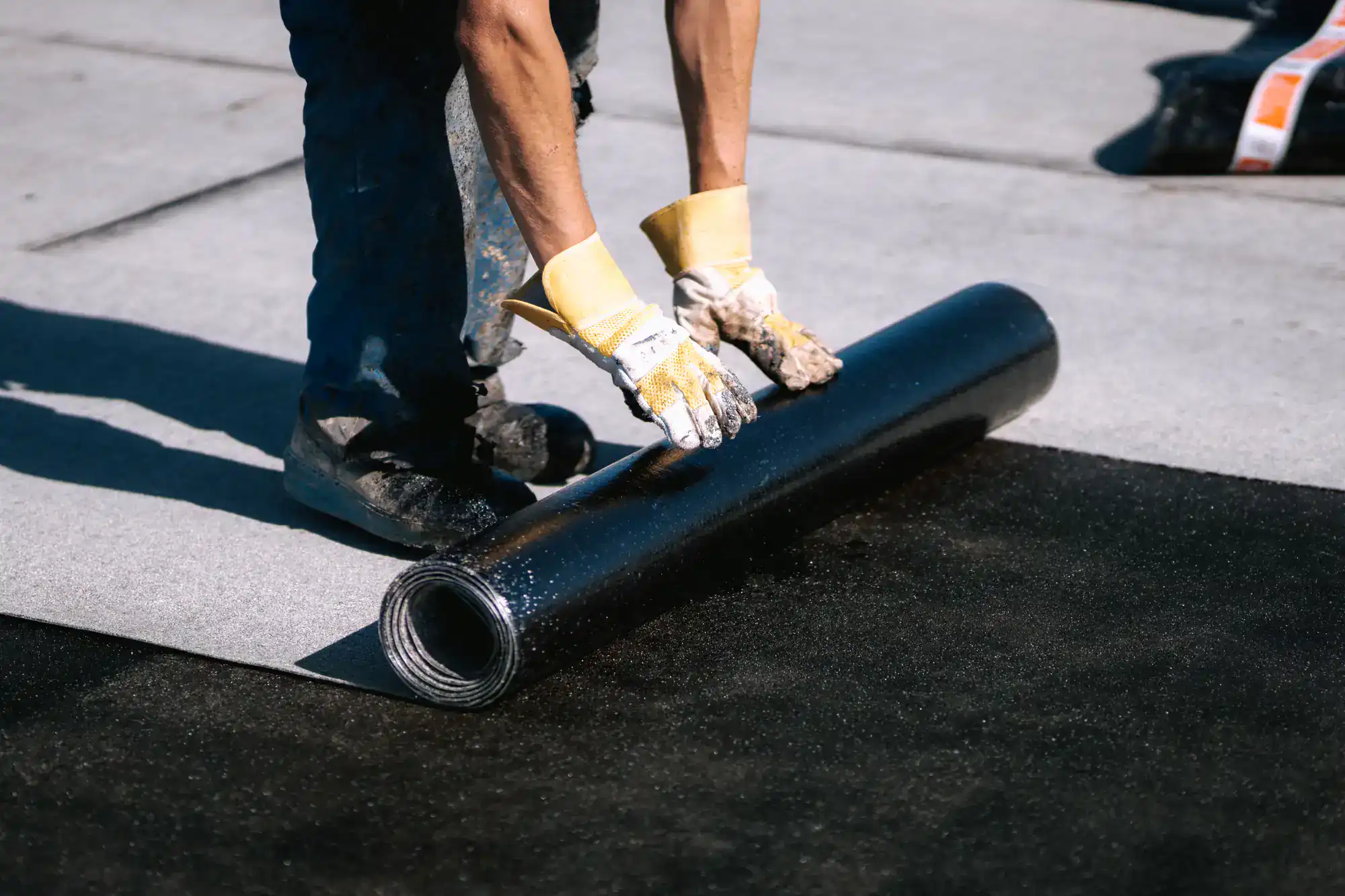
Ready to get started?
TPO roofing offers excellent energy efficiency with its reflective white surface that can reduce cooling costs by up to 15%. It handles pooling water well and comes with warranties up to 30 years when properly maintained.
EPDM rubber roofing provides proven durability in cold climates and flexibility during temperature extremes. It’s particularly effective for buildings that experience regular freeze-thaw cycles common in the Elmont area.
Modified bitumen systems work well for roofs with heavy foot traffic or equipment loads. While installation costs more upfront, the multi-layer design provides exceptional protection against punctures and weather damage. Each material addresses specific challenges that flat roofs face in Nassau County’s climate.
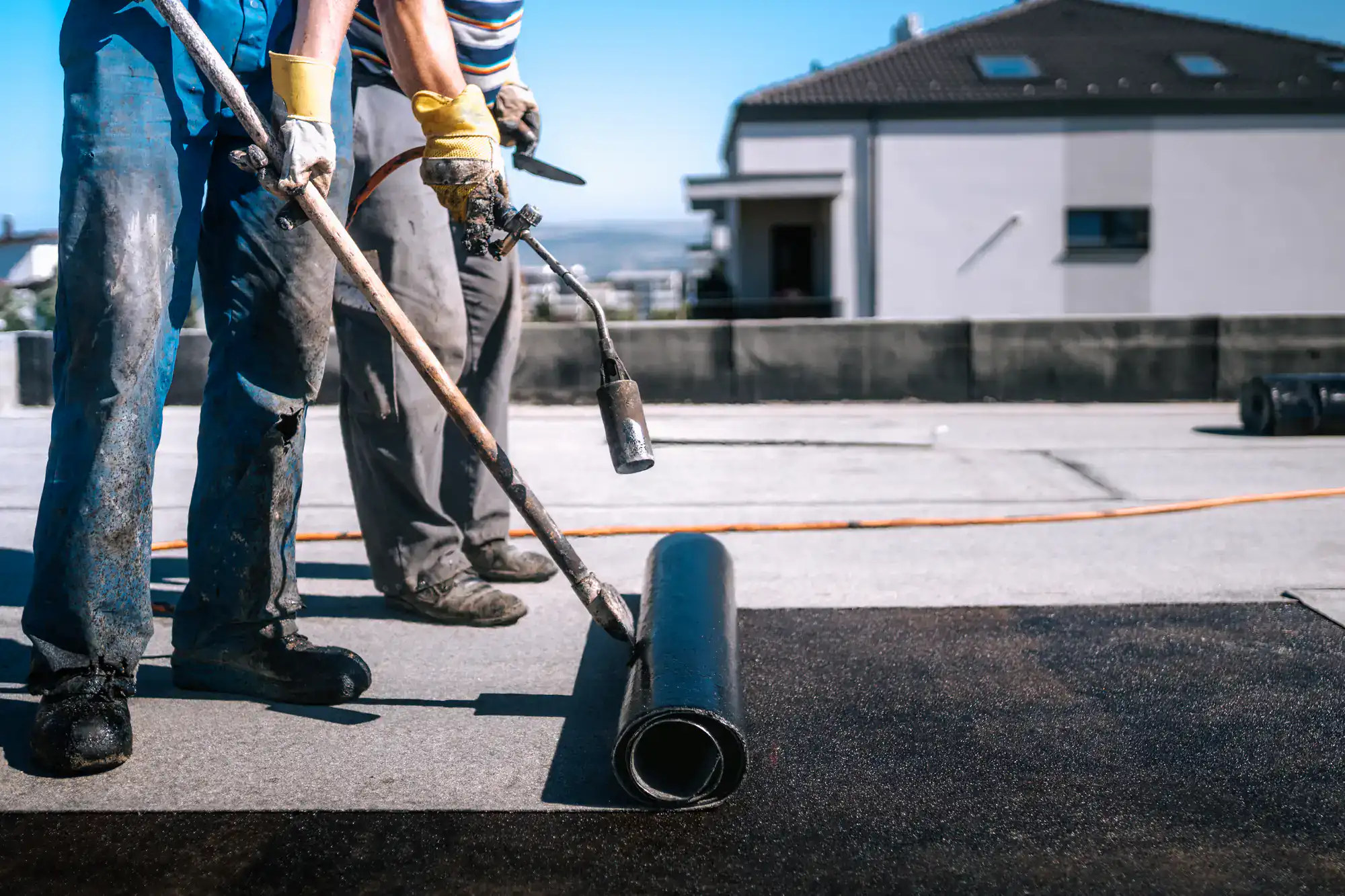
A properly installed flat roof typically lasts 15-30 years depending on the material chosen. TPO systems often reach 20-30 years with regular maintenance, while EPDM can provide similar longevity when installed correctly.
Modified bitumen systems usually last 15-20 years but offer excellent durability against weather damage. The key factor isn’t just the material – it’s proper installation and regular maintenance that extends roof life in Long Island’s challenging climate.
Most flat roof leaks result from poor drainage causing water pooling, damaged membrane seams, or improperly sealed penetrations around vents and equipment. Long Island’s heavy rains and snow-melt can overwhelm inadequate drainage systems.
Temperature extremes cause materials to expand and contract, potentially opening seams over time. Ice dams from winter weather can force water under the membrane. Regular inspections help identify these issues before they become major problems.
Repair costs vary widely based on the extent of damage and materials involved. Minor repairs like sealing small leaks might cost a few hundred dollars, while major membrane replacement can range from $3-9 per square foot depending on the system.
The key is addressing problems early. A small leak that’s caught quickly costs much less than water damage that affects the roof structure. Regular maintenance and prompt repairs prevent minor issues from becoming expensive replacements.
TPO is currently the most popular choice for commercial flat roofing, commanding about 40% of the market due to its energy efficiency and cost-effectiveness. It reflects heat well and handles pooling water better than some alternatives.
For buildings with heavy rooftop equipment or regular foot traffic, modified bitumen provides superior durability despite higher installation costs. EPDM works well for larger roofs with minimal penetrations. The best choice depends on your building’s specific use, budget, and long-term goals.
Proper drainage starts with adequate roof slope – even “flat” roofs need at least 1/4 inch per foot of slope toward drains. Regular drain cleaning prevents blockages that cause water backup.
Tapered insulation systems can correct drainage problems on existing roofs by creating proper slope where it’s lacking. Additional drains can be installed in problem areas. The key is addressing drainage issues promptly since standing water for more than 48 hours can void manufacturer warranties and cause permanent damage.
Consider replacement when repairs become frequent, when the roof has reached 75% of its expected lifespan, or when water damage affects the roof structure. Multiple leaks across different areas often indicate system-wide failure.
Energy efficiency improvements might also justify replacement – newer materials like TPO can significantly reduce cooling costs compared to older systems. A professional inspection can assess whether your roof has years of reliable service left or if replacement makes more financial sense than continued repairs.
Other Services we provide in Elmont